Abstract
This paper presents information on the prevalence of a variety of health behaviors and health conditions on an American Indian reservation in the Plains region of the western United States. In addition, data from two non-Indian comparison groups were used to examine the extent to which differences in health status and health behaviors between Indians and non-Indians could be explained by differences in socioeconomic status. The American Indian data were from a survey conducted in 1988 during an evaluation of a local community-based health promotion program, part of the Kaiser Family Foundation's Community Health Promotion Grants Program. The comparison groups were 12 communities in California surveyed in evaluating the Community Health Promotion Grants Program and three Plains States participating in the Behavioral Risk Factor Surveillance Survey. The results show that the higher prevalences of risk-taking behavior among Indians and their poorer self-reported health status remained after adjustment for socioeconomic status. Also, among Indians, higher levels of income and education were not associated with improved self-reported health status and lower prevalence of tobacco use, as was the case with the comparison groups. The higher prevalences of risk-taking behaviors and ill health among American Indians residing on one reservation, even among those with higher socioeconomic status, suggests a need for the investigation of other social and environmental influences.
Full text
PDF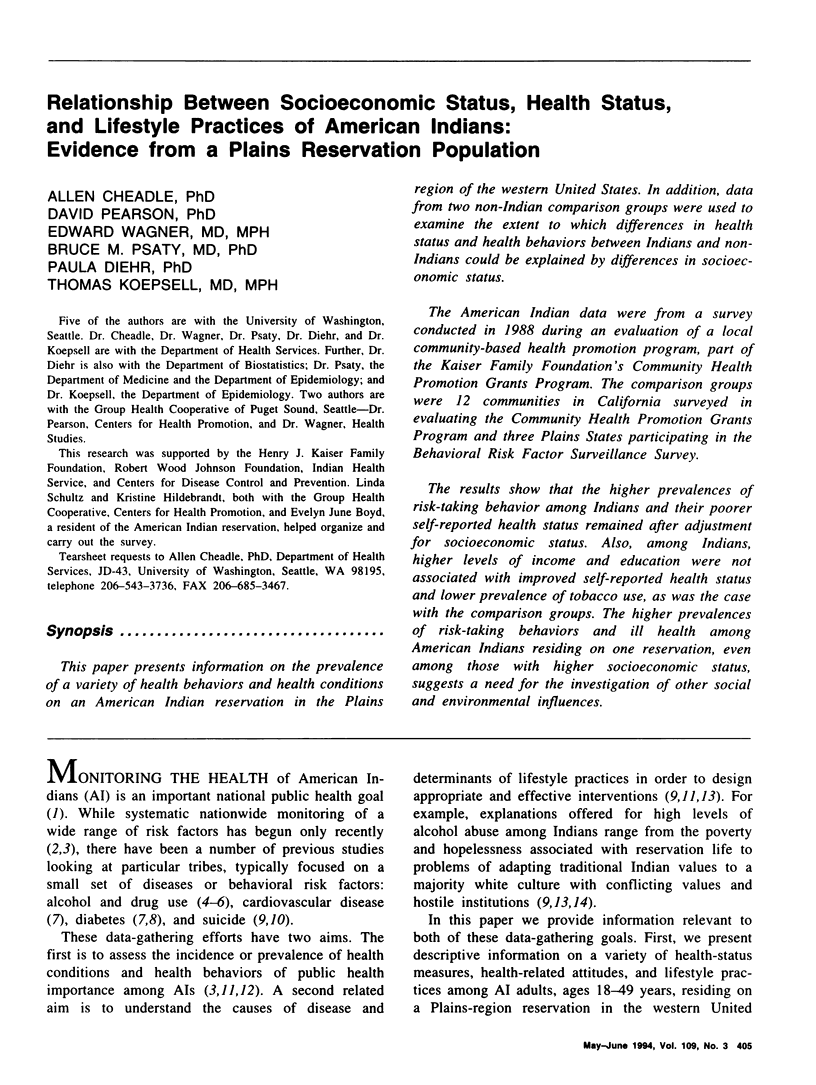
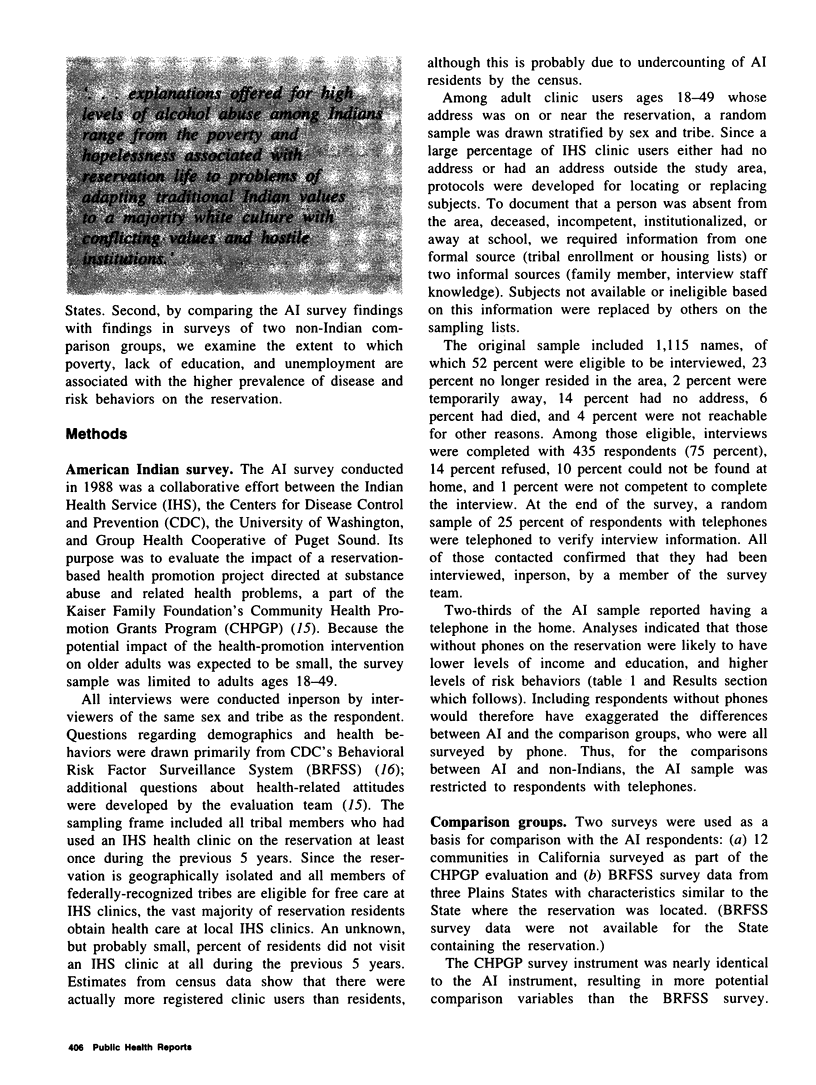
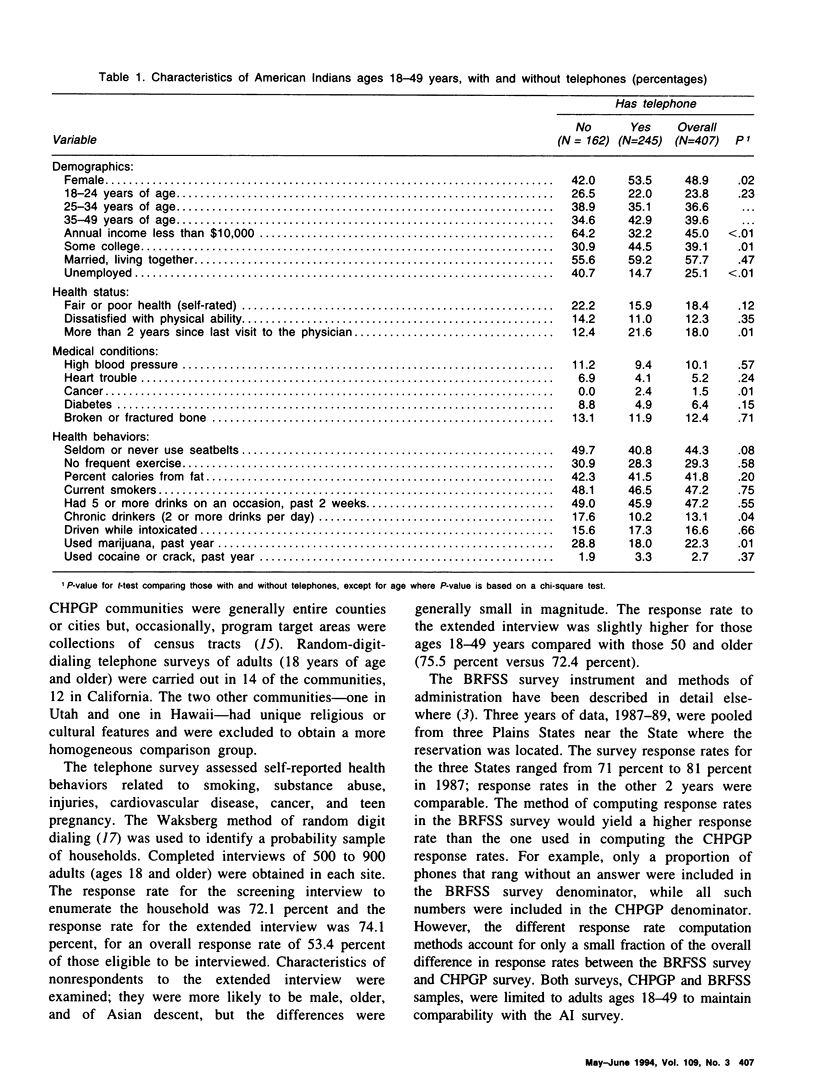
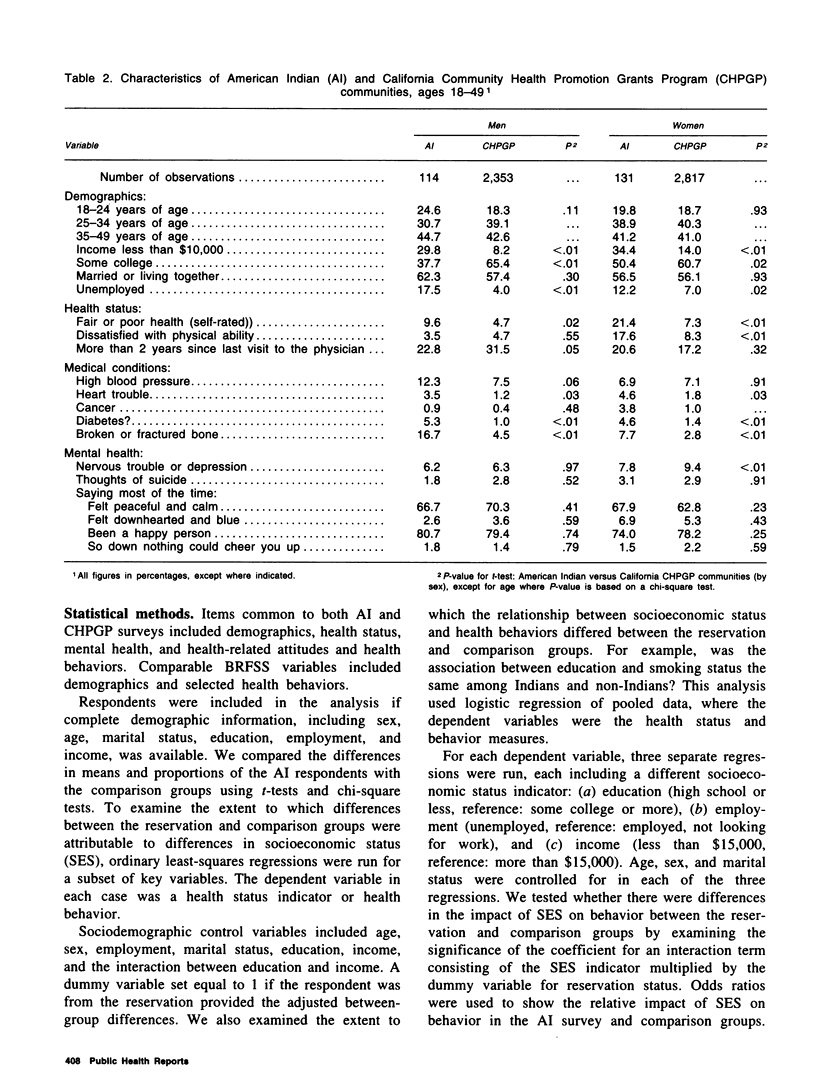
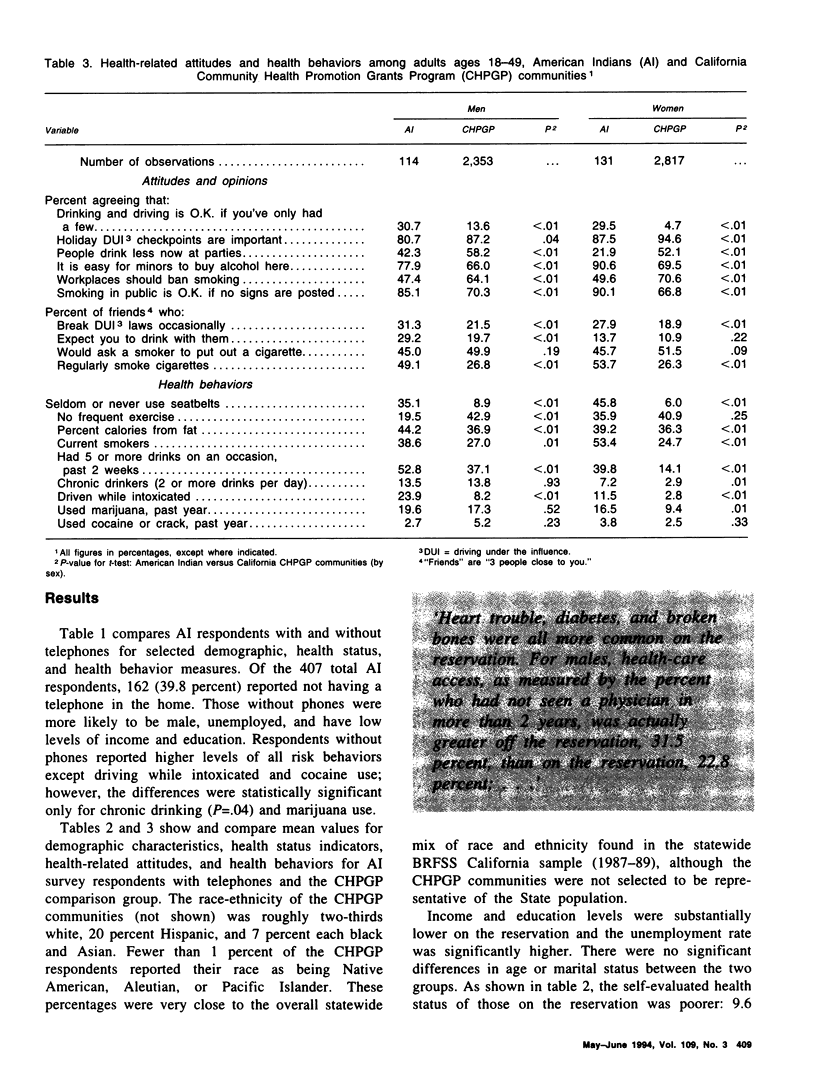
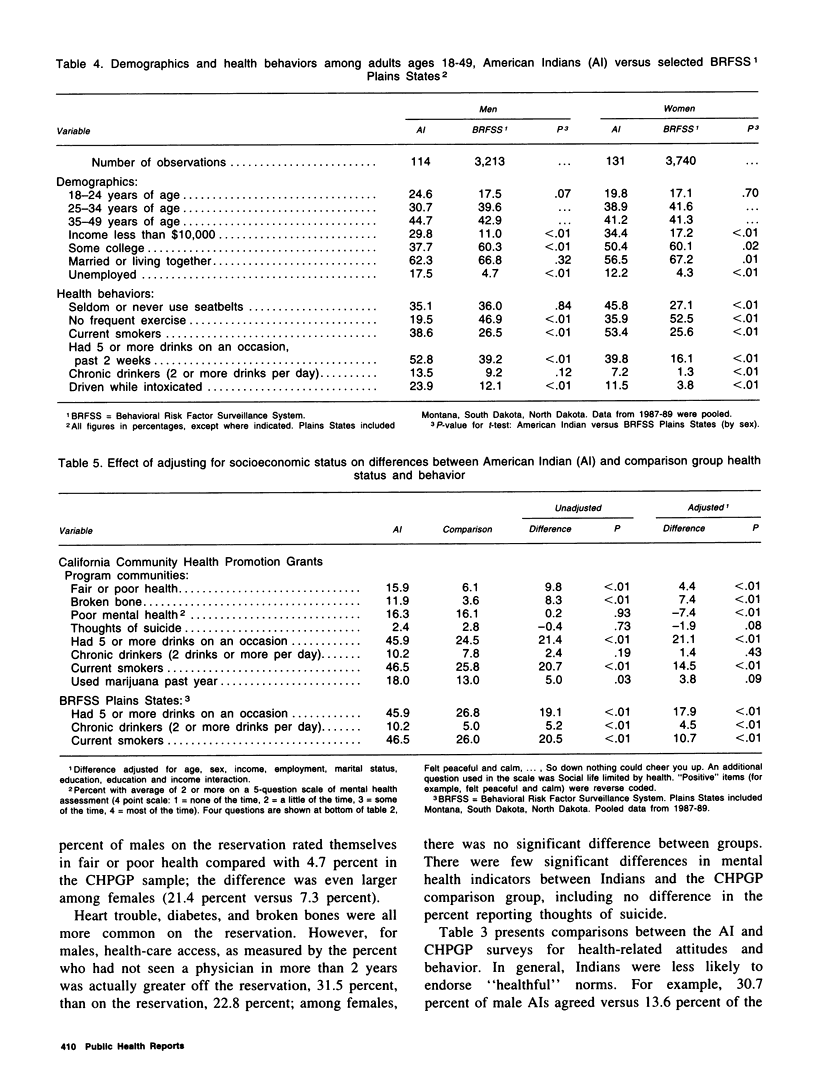
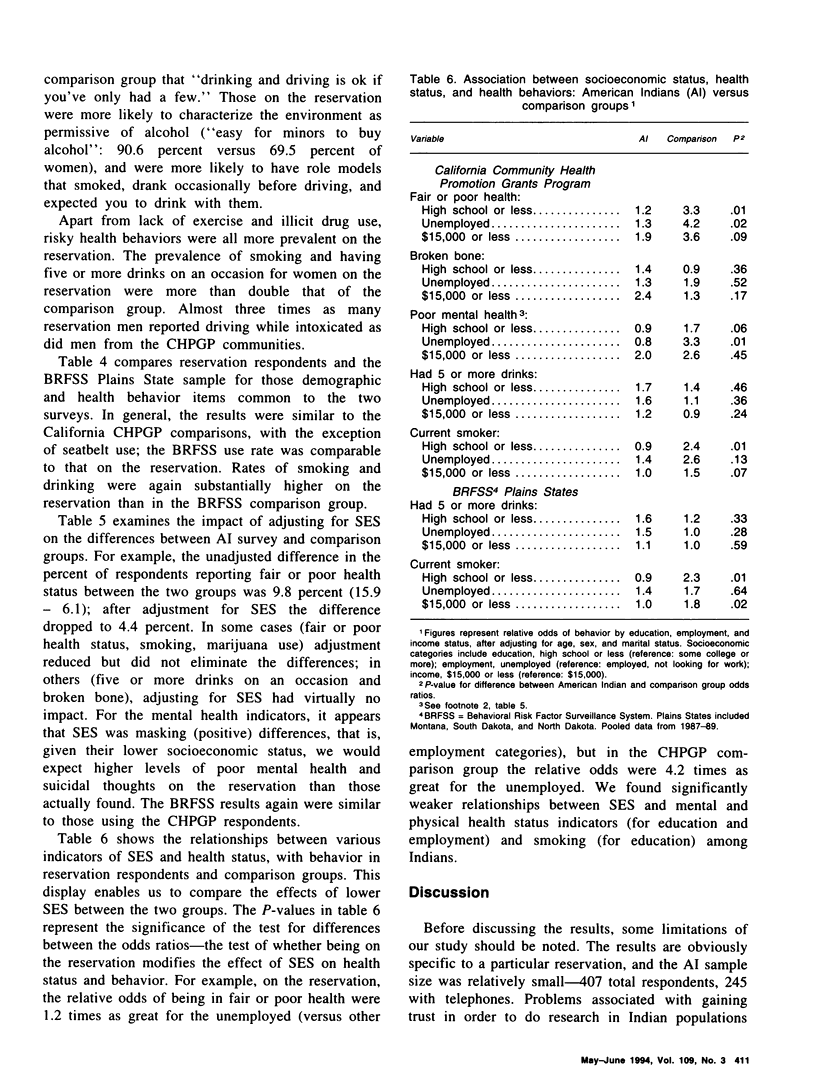
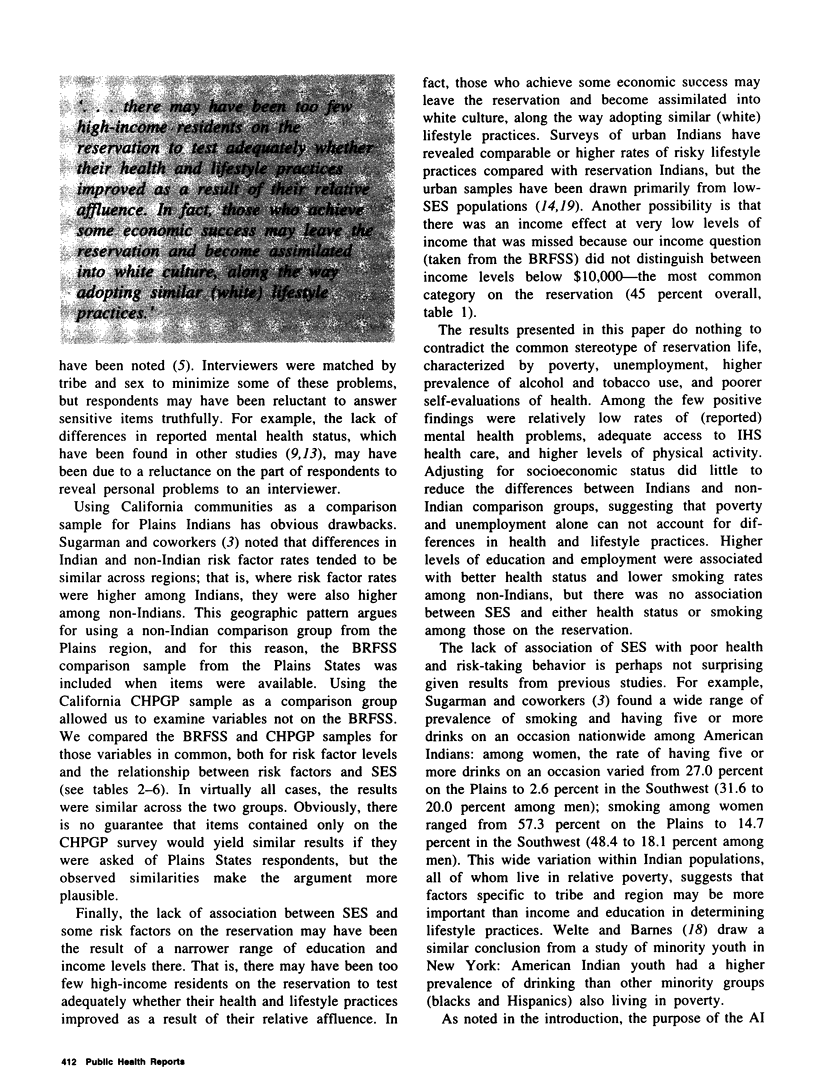
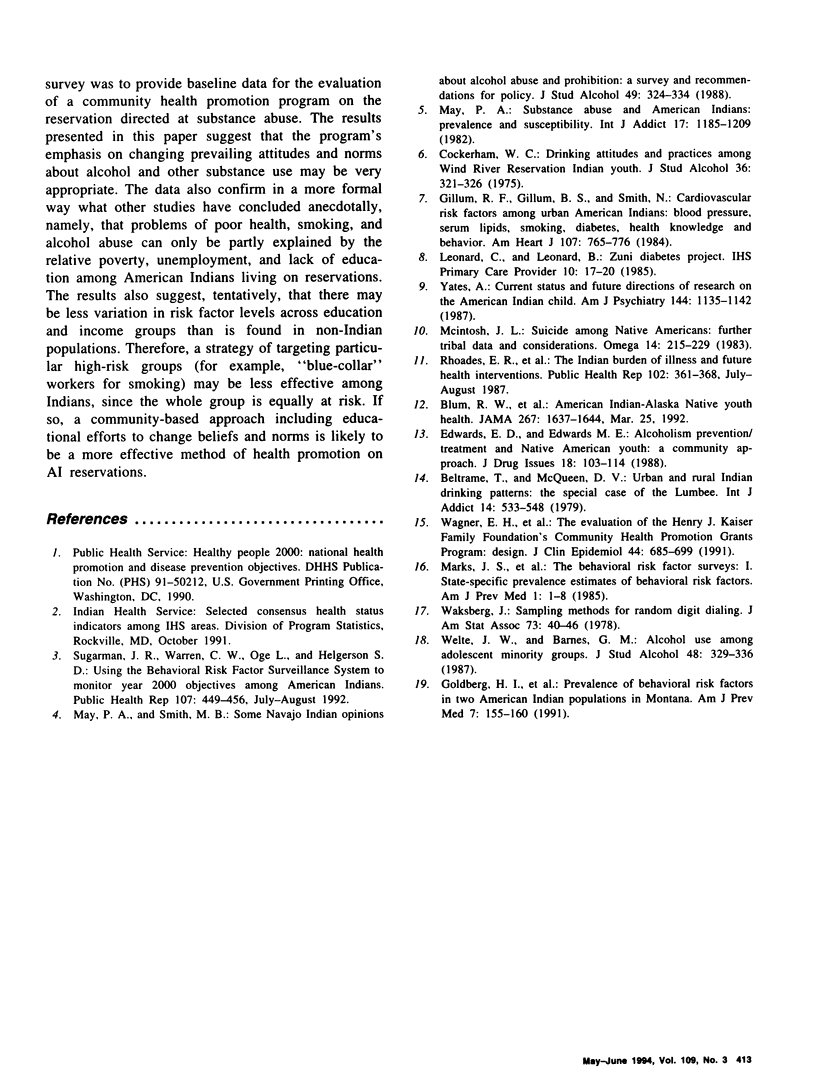
Selected References
These references are in PubMed. This may not be the complete list of references from this article.
- Beltrame T., McQueen D. V. Urban and rural Indian drinking patterns: the special case of the Lumbee. Int J Addict. 1979 May;14(4):533–548. doi: 10.3109/10826087909054600. [DOI] [PubMed] [Google Scholar]
- Blum R. W., Harmon B., Harris L., Bergeisen L., Resnick M. D. American Indian--Alaska Native youth health. JAMA. 1992 Mar 25;267(12):1637–1644. doi: 10.1001/jama.267.12.1637. [DOI] [PubMed] [Google Scholar]
- Cockerham W. C. Drinking attitudes and practices among Wind River Reservation Indian youth. J Stud Alcohol. 1975 Mar;36(3):321–326. doi: 10.15288/jsa.1975.36.321. [DOI] [PubMed] [Google Scholar]
- Gillum R. F., Gillum B. S., Smith N. Cardiovascular risk factors among urban American Indians: blood pressure, serum lipids, smoking, diabetes, health knowledge, and behavior. Am Heart J. 1984 Apr;107(4):765–776. doi: 10.1016/0002-8703(84)90326-0. [DOI] [PubMed] [Google Scholar]
- Goldberg H. I., Warren C. W., Oge L. L., Helgerson S. D., Pepion D. D., LaMere E., Friedman J. S. Prevalence of behavioral risk factors in two American Indian populations in Montana. Am J Prev Med. 1991 May-Jun;7(3):155–160. [PubMed] [Google Scholar]
- Marks J. S., Hogelin G. C., Gentry E. M., Jones J. T., Gaines K. L., Forman M. R., Trowbridge F. L. The behavioral risk factor surveys: I. State-specific prevalence estimates of behavioral risk factors. Am J Prev Med. 1985 Nov-Dec;1(6):1–8. [PubMed] [Google Scholar]
- May P. A., Smith M. B. Some Navajo Indian opinions about alcohol abuse and prohibition: a survey and recommendations for policy. J Stud Alcohol. 1988 Jul;49(4):324–334. doi: 10.15288/jsa.1988.49.324. [DOI] [PubMed] [Google Scholar]
- May P. A. Substance abuse and American Indians: prevalence and susceptibility. Int J Addict. 1982 Oct;17(7):1185–1209. doi: 10.3109/10826088209056349. [DOI] [PubMed] [Google Scholar]
- Rhoades E. R., Hammond J., Welty T. K., Handler A. O., Amler R. W. The Indian burden of illness and future health interventions. Public Health Rep. 1987 Jul-Aug;102(4):361–368. [PMC free article] [PubMed] [Google Scholar]
- Sugarman J. R., Warren C. W., Oge L., Helgerson S. D. Using the Behavioral Risk Factor Surveillance System to monitor year 2000 objectives among American Indians. Public Health Rep. 1992 Jul-Aug;107(4):449–456. [PMC free article] [PubMed] [Google Scholar]
- Wagner E. H., Koepsell T. D., Anderman C., Cheadle A., Curry S. G., Psaty B. M., Von Korff M., Wickizer T. M., Beery W. L., Diehr P. K. The evaluation of the Henry J. Kaiser Family Foundation's Community Health Promotion Grant Program: design. J Clin Epidemiol. 1991;44(7):685–699. doi: 10.1016/0895-4356(91)90029-9. [DOI] [PubMed] [Google Scholar]
- Welte J. W., Barnes G. M. Alcohol use among adolescent minority groups. J Stud Alcohol. 1987 Jul;48(4):329–336. doi: 10.15288/jsa.1987.48.329. [DOI] [PubMed] [Google Scholar]
- Yates A. Current status and future directions of research on the American Indian child. Am J Psychiatry. 1987 Sep;144(9):1135–1142. doi: 10.1176/ajp.144.9.1135. [DOI] [PubMed] [Google Scholar]


